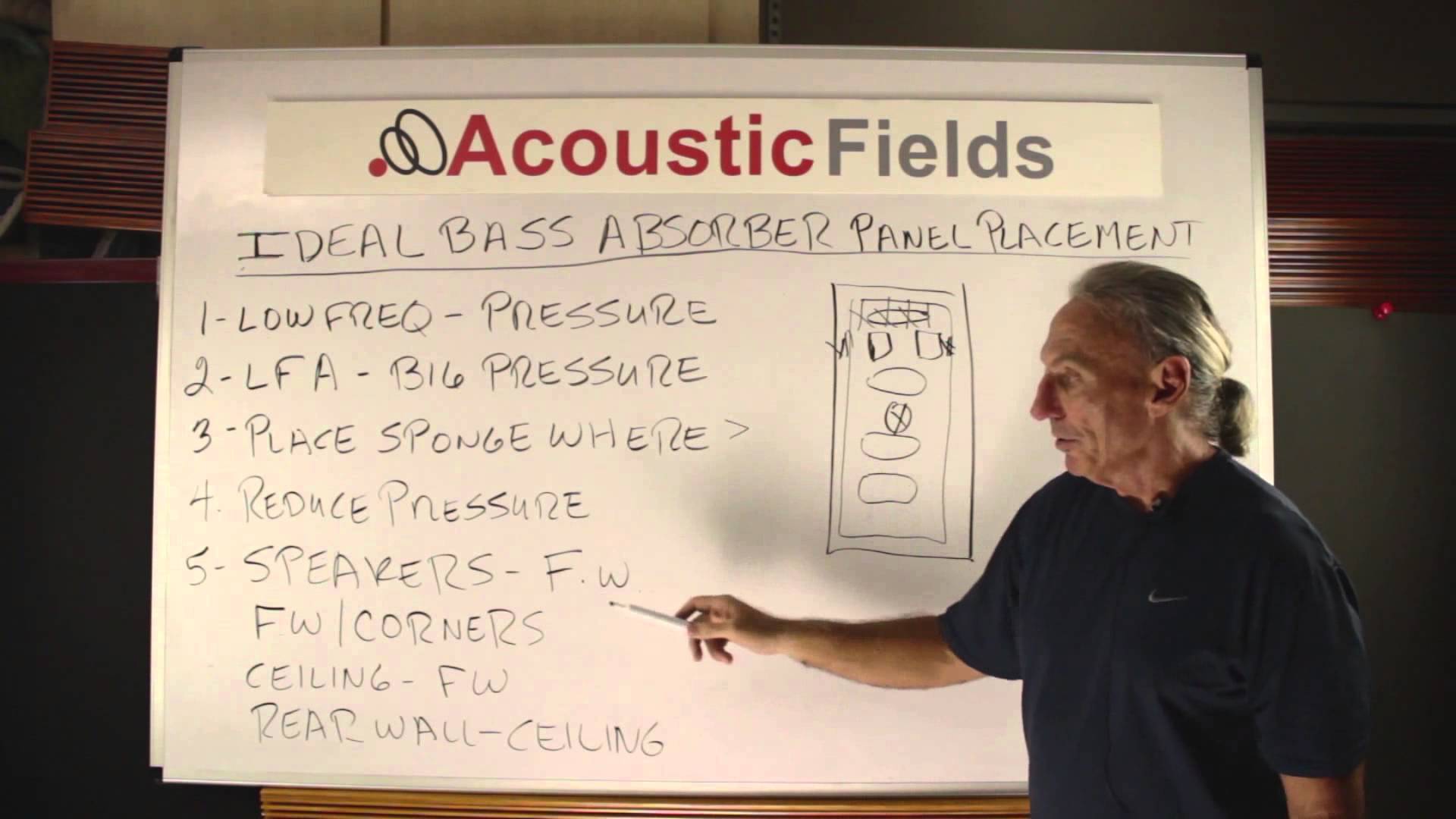Today we’re going to talk about ideal bass absorber panel placement. Low frequency energy issues are pressure related so we need a pressure reactive device, something that absorbs pressure or deals with pressure to create absorption. Foam is not one of them. Please don’t use foam and call it a bass absorber because it’s not. Low frequency is about pressure and low frequency absorption is about managing that pressure. So what do we need to do? Where is the pressure in the room?
Well the pressure in the room is always greatest around the room boundary surfaces and it spreads throughout the room in the middle also. So we have to be very careful with our speaker positions, very careful with our listening positions. So our goal is then to reduce the pressure around the boundary surface of the room using a pressure activated device. So always the boundary surfaces of the room are a good place to start for pressure management. But that said we can narrow that focus down even further.
What are our two pressure producing devices in the room?
Our left and the right channel. So the energy created by these two devices is going to be really high between the speakers and the front wall and going to be really high between the speakers and the sidewall. If you don’t have the capital or the money to treat your whole room, this is the first area you start with. When people buy our BDA products or low frequency absorption products and build them themselves, I always tell them ‘this is your start point for positioning because this is the highest pressure area in your room so you get the most acoustic benefit’.
So one unit minimum behind each speaker will make a huge difference, two in most rooms is usually ideal. So we’re all about reducing the pressure and it’s the front wall to speakers that has the highest pressure, the corners and the front wall are the next high pressure area so that’s a placement area that we want to look at.
The corners are also important but not as important as these two front wall corners and then the rear wall to ceiling is another issue that we have. So we always want to place our low frequency absorption management technology in the areas where pressure is the highest, not air movement, we’re not concerned with the movement of the air. We’re concerned with the pressure in the room because our room dimensions won’t allow low frequency energy to fit so we put our pressure management devices around the perimeter of the room and then we focus on the front end of the room where the energy producing devices, our speakers are.
In Summary
So I hope that helps you. If you have any questions at any time I am always on hand to help answer them. Leave them in the comments section or email me at info@acousticfields.com. If you would like to learn more about room acoustics please sign up for my free videos and ebook by joining the mailing list here. I send room tuning tips and things for you to test in your room every Wednesday. They are easy to follow and really help you enjoy more of your music. And if you would like your room acoustic issues analysed for free by me then please fill in the form here and I will be happy to take a look for you.
Thanks and speak soon
Dennis








We use broadband absorption in the two most critical frequency regions in small rooms. Our Diaphragmatic absorbers, ACDA series, have…
Interesting web site and provocative introduction. Please check your copy for typos, otherwise nicely presented. I would like to see…
There is no such thing as soundproof anything especially carpet. Low frequency noise transmission requires a permanent construction fix with…
Hello Dennis! Our neighbors put a Ice Bath in their garage which is right below our bedroom and the Low…